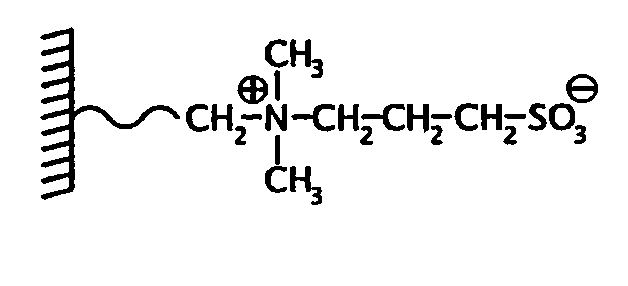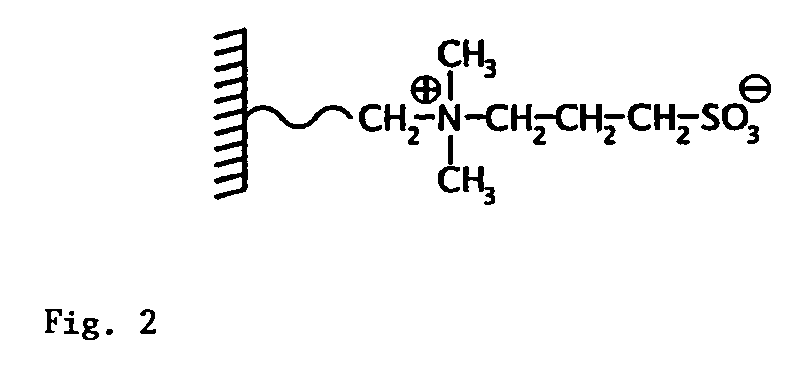Mass spectrometric quantitative detection of methyl malonic acid and succinic acid using hilic on a zwitterionic stationary phase
a technology of methyl malonic acid and succinic acid, which is applied in the direction of dispersed particle separation, separation processes, instruments, etc., can solve the problems of increasing sample throughput, time-consuming, and complicated methods, and achieve the effect of optimizing the separation selectivity of peptides
- Summary
- Abstract
- Description
- Claims
- Application Information
AI Technical Summary
Benefits of technology
Problems solved by technology
Method used
Image
Examples
example 1
Experimental Section
[0036]Reagents and Chemicals.
[0037]Acetonitrile (HPLC grade), and the ammonium acetate of analytical grade were both purchased from form Merck (Darmstadt, Germany), while formic acid (%, p.a.) was from J T BAKER (Deventer, The Netherlands). All water was purified by a Milli-Q water purification system (Millipore, Bedford, Mass.). The plasma protein precipitation (PPT) solution was prepared by adding 25 mL acetonitrile, followed 250 microliter concentrated acetic acid and 43 microliter of a 196.5 micromolar deuterated methyl malonic acid (d3-MMA) stock solution to a 50 mL volumetric flask to which more acetonitrile was added upto the mark. This PPT solution contains 99.5 volume-% acetonitrile, 0.5 volume-% acetic acid and a 169 nM concentration of d3-MMA.
[0038]Protein Precipitation and Clean-Up of Plasma Samples.
[0039]Using the HILIC technique, it is possible to apply a very effective and straight forward sample pre-treatment of clinical samples. Since acetonitril...
example 2
Experimental Conditions
[0049]Column: ZIC®-HILIC 50×4.6 mm, 5 μm
[0050]UV[0051]Column temp: RT[0052]Mobile phase: Acetonitrile / ammonium acetate (pH 6.8, 30 mM in final solution); 70 / 30 (v / v)[0053]Flow-rate: 1.5 mL / min[0054]Detector: UV at 206 nm (UFS 1.0 V)[0055]Injection volume: 5 μL of test solution in mobile phase
[0056]MS[0057]Column temp: 30° C.[0058]Mobile phase: Acetonitrile / ammonium acetate (pH 6.8, 25 mM in final solution); 75 / 25 (v / v)[0059]Flow-rate: 1.0 mL / min[0060]Split: 100 μL / min to MS[0061]Detector: Agilent 1100 bench top MS, ESI in positive mode[0062]Capillary voltage: 3000 V[0063]Fragmentor: 150 V[0064]Mass range: 50-200 m / z[0065]Injection volume: 5 μL of 0.1 mg / mL of each compound in mobile phase[0066]Sample: In elution order; homocysteine, methylmalonic acid and succinic acid all dissolved in mobile phase.
[0067]Method development is commonly performed using UV detection, because of its ease of use and robustness, but the technique often lacks the sensitivity needed t...
PUM
 Login to View More
Login to View More Abstract
Description
Claims
Application Information
 Login to View More
Login to View More - R&D
- Intellectual Property
- Life Sciences
- Materials
- Tech Scout
- Unparalleled Data Quality
- Higher Quality Content
- 60% Fewer Hallucinations
Browse by: Latest US Patents, China's latest patents, Technical Efficacy Thesaurus, Application Domain, Technology Topic, Popular Technical Reports.
© 2025 PatSnap. All rights reserved.Legal|Privacy policy|Modern Slavery Act Transparency Statement|Sitemap|About US| Contact US: help@patsnap.com



